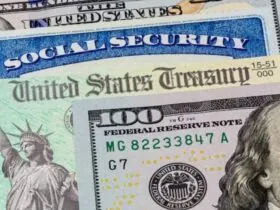When it comes to U.S. currency, most people immediately think of the $100 bill as the highest denomination currently in circulation. However, the U.S. Treasury has printed larger denominations in the past, including the highly coveted $10,000 bill. Though no longer in circulation, this rare bill has become a prized collector’s item, often fetching far more than its face value at auctions. In this article, we’ll dive into the history of the $10,000 bill, its rarity, how its value is determined, and how you can authenticate one.
The $10,000 Bill: A Historical Overview
This Article Includes [hide]
The $10,000 bill was part of a series of high-denomination currency notes printed by the U.S. Treasury during the 20th century. The bill featured the portrait of Salmon P. Chase, the Secretary of the Treasury under President Abraham Lincoln during the Civil War. Chase played a significant role in shaping U.S. currency and was instrumental in the introduction of the first $1 bill.
The $10,000 bill was primarily used for large-scale financial transactions, such as interbank transfers. At its peak, it was a tool for moving large sums of money between banks rather than for everyday transactions. The bill was last printed in 1945, and due to a decrease in demand, it was officially discontinued by the U.S. Treasury in 1969. Despite no longer being printed, these bills are still considered legal tender, which means they can technically be deposited into a bank account or used for transactions—though that is highly unlikely.
Why Is the $10,000 Bill So Valuable?
Today, the $10,000 bill is a rare and valuable item. Its high price is primarily driven by its scarcity. For instance, only 336 notes from the 1928 and 1934 series are known to have survived. The rarity of these bills, combined with their historical significance, makes them highly desirable to collectors.
A $10,000 bill is worth significantly more than its face value, depending on its condition. Even a bill in poor condition can fetch a starting price of $30,000. Recently, a 1934 series $10,000 bill, graded in “Uncirculated 64” condition, sold at auction for a staggering $480,000. This remarkable value highlights how rare and prized these bills are in the world of numismatics.
What Affects the Value of a $10,000 Bill?
The value of a rare $10,000 bill is determined by several factors, with condition being the most important. The grading system used by collectors ranges from 1 (poor) to 70 (perfect). A bill in pristine, uncirculated condition will naturally command a much higher price than one with significant damage, folds, or creases.
Other factors include the bill’s series and serial number. Bills from particular years or with specific serial numbers may be more desirable to collectors. For example, the 1934 series $10,000 note mentioned earlier sold for nearly half a million dollars largely because of its exceptional condition and unique characteristics.
How to Authenticate a $10,000 Bill
If you are lucky enough to come across a $10,000 bill, authenticity is key. Older bills, such as those from the $10,000 series, do not have modern security features like today’s currency, so identifying genuine bills requires careful examination of design elements and serial numbers.
For example, $10,000 bills from the 1918 series feature a blue seal, while later versions have a green seal. Each series has its own distinctive characteristics, making it easier for experts to differentiate between authentic and counterfeit notes. Certain serial numbers, like B1A or L1957A from the 1918 series, are known to be held in museums and should never appear in circulation. If you come across one of these numbers, it is likely a counterfeit.
If you are unsure about the authenticity of a bill, it’s always best to consult a professional. Currency dealers, auction houses, and even financial institutions can help authenticate rare currency notes. A proper evaluation will ensure that your $10,000 bill is legitimate and may even help you get the best price if you choose to sell it.
Conclusion: The Allure of the $10,000 Bill
While $10,000 bills are no longer printed, they remain a fascinating piece of U.S. history and a valuable collectible. With their limited availability, historical significance, and high auction prices, they stand as a testament to the evolving nature of U.S. currency. If you ever find one, whether in a safe, attic, or coin shop, it’s worth holding on to—both for its historical value and its potential to bring in a hefty sum at auction.
Also Read:











Leave a Reply